
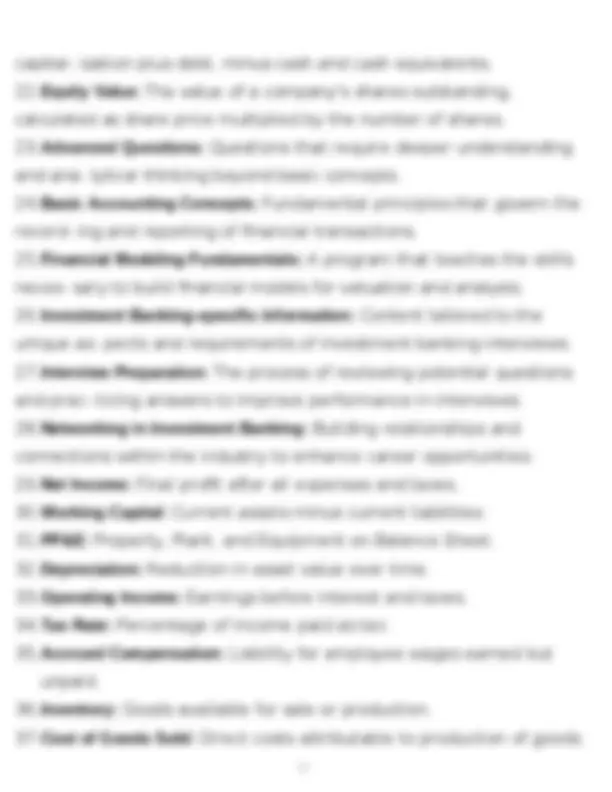
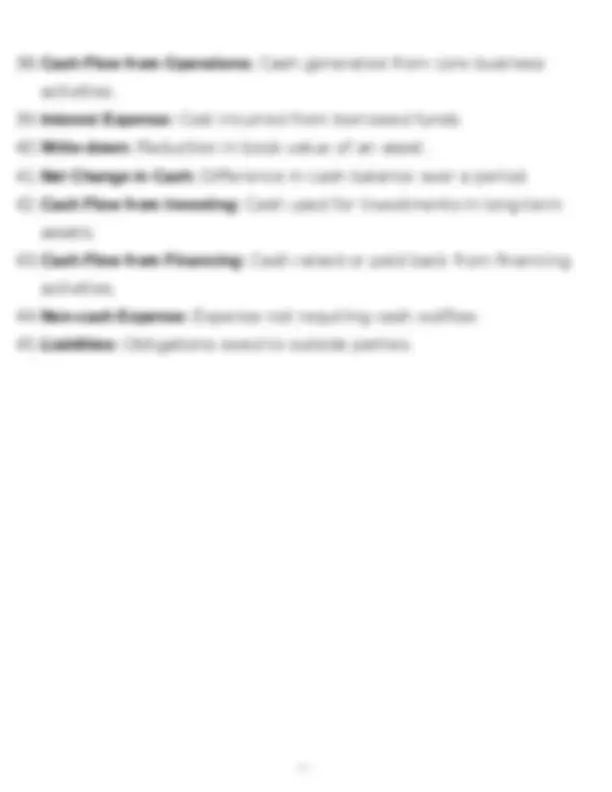
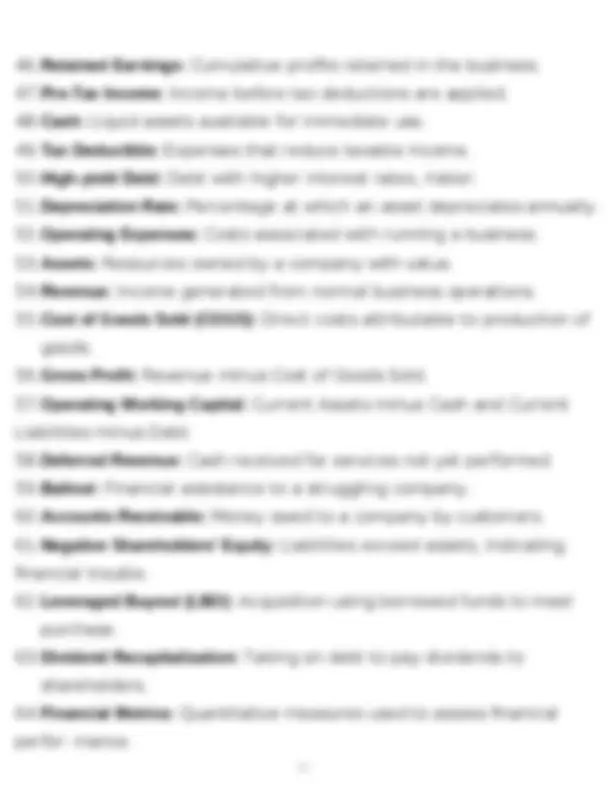
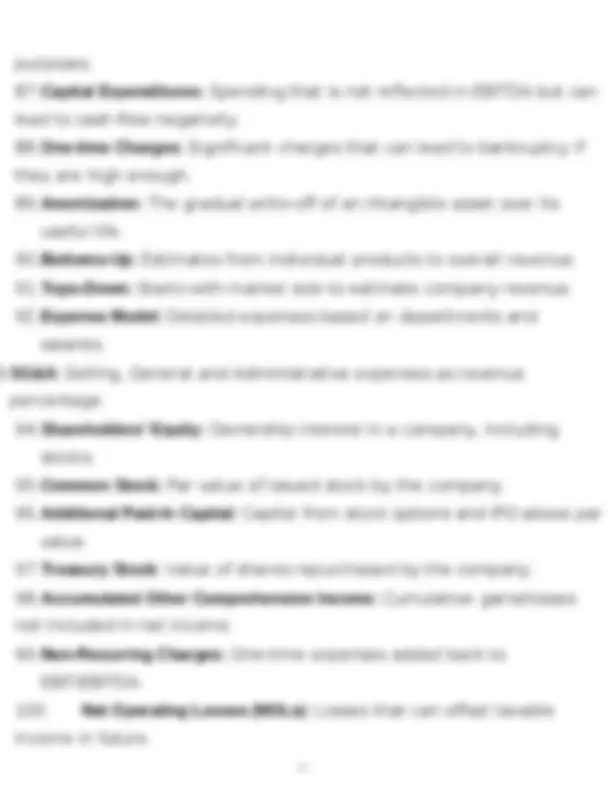
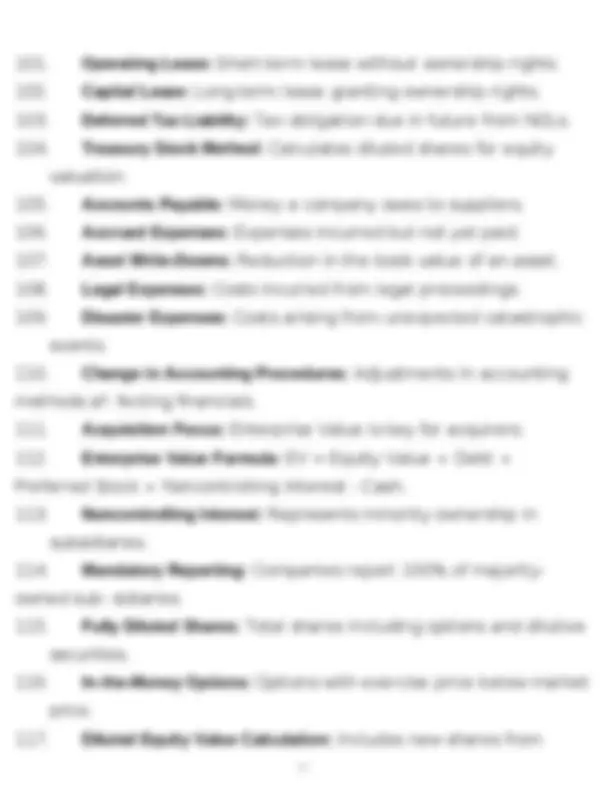


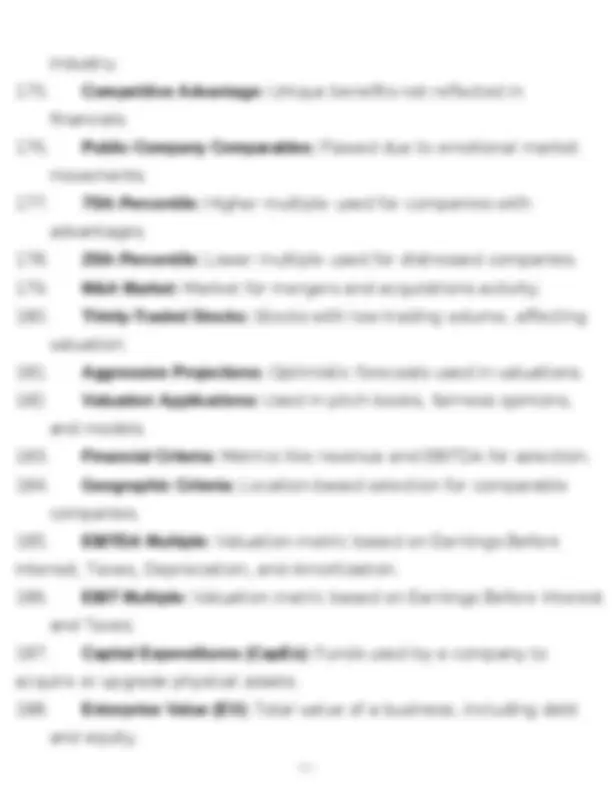
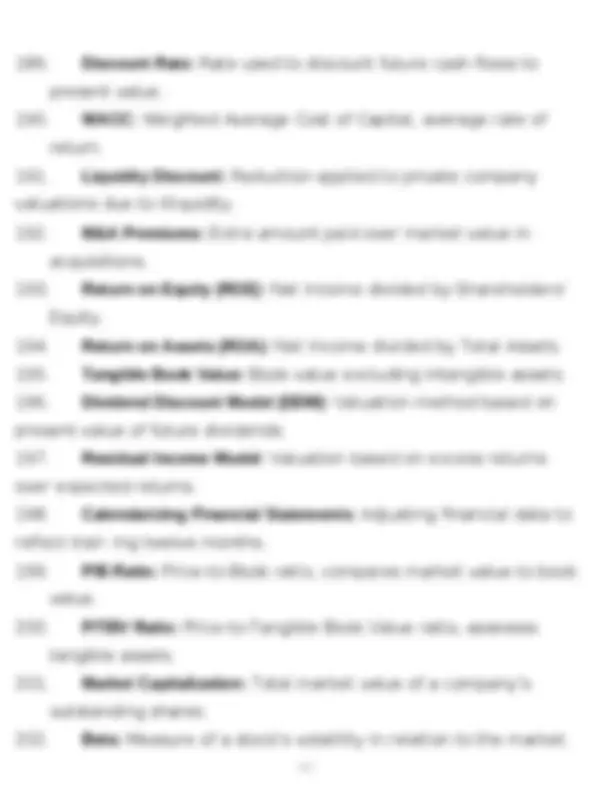


Study with the several resources on Docsity

Earn points by helping other students or get them with a premium plan


Prepare for your exams
Study with the several resources on Docsity

Earn points to download
Earn points by helping other students or get them with a premium plan
Community
Ask the community for help and clear up your study doubts
Discover the best universities in your country according to Docsity users
Free resources
Download our free guides on studying techniques, anxiety management strategies, and thesis advice from Docsity tutors
A comprehensive overview of the key financial statements - the income statement, balance sheet, and cash flow statement - and their major line items. It also covers fundamental concepts in financial modeling and valuation, including cash-based vs. Accrual accounting, enterprise value, equity value, working capital, depreciation, and various valuation methodologies such as discounted cash flow (dcf), comparable company analysis, and precedent transactions. The document delves into the nuances of these topics, explaining how they are calculated, their significance, and their applications in financial analysis and decision-making. It serves as a valuable resource for students and professionals seeking to develop a strong understanding of corporate finance and valuation principles.
Typology: Exams
1 / 16

This page cannot be seen from the preview
Don't miss anything!










1 / a
2 /
4 /
5 /
7 / time charges.
8 / purposes.
10 / exercised op- tions.
11 /
13 /
14 / industry.
16 /